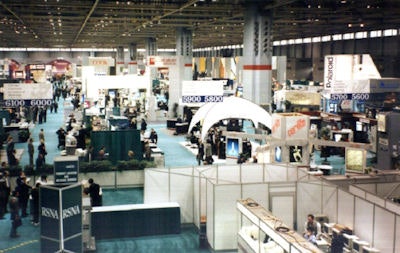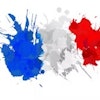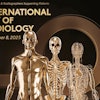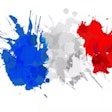
This month sees the 100th RSNA meeting, but the pace of change has been particularly rapid during the past three decades. Today's industrial landscape is entirely different, radiology has gone digital and global, and the leading modalities have developed and matured.
I attended my first RSNA meeting 30 years ago. Held in Washington, DC, it was the last to be held outside Chicago; 1984 was the first year when all of the major radiology suppliers were able to deliver MRI. CT was changing fast, but x-ray and ultrasound were still analog products and a network was something where trains operated. For Dr. Herbert Kressel, RSNA Gold Medalist in 2011, the period that followed was a golden age for radiology. Advances necessarily go hand in hand with development of technology, and for many people RSNA is seen as a show or a showcase for technology.
 McCormick Place became the meeting's permanent home in 1985, and the ultramodern South Building was opened in 1996.
McCormick Place became the meeting's permanent home in 1985, and the ultramodern South Building was opened in 1996.EMI had disappeared in 1981, but there were a plethora of companies offering CT and MRI that are absent today. Picker, Technicare, Diasonics, CGR, and Elscint probably represent the largest.
If the decade before 1984 was CT's era, then the next decade was one in which MRI developed most rapidly. In both modalities, reducing or removing artifacts was the main challenge. RSNA offered the opportunity to see how well manufactures were cleaning up their image. CT was challenging, but MRI was worse. Both suffered from motion artifacts that came in all forms: cardiac, respiratory, flow. Metal was a problem. And then MRI had a whole raft of other challenges that we can summarize as inhomogeneities of the magnetic and radiofrequency (RF) fields. A lot of time was spent viewing -- overtly or clandestinely -- companies' displays in the hope of uncovering a flaw.
MRI was slow, but by the end of the decade new sequences, FLASH and echo planar (EPI), had transformed imaging speed. Magnet field strength dominated this era. GE, the late entrant, had pinned its hopes on 1.5 tesla, while established players preferred sub 0.5-tesla systems. Siemens later stole a march on its rivals by offering a 1-tesla system as the best of both worlds. With few companies offering comparable systems, there was plenty of opportunity to disparage competitors' offerings.
The switch to digital
Computing in the 1980s was big and bulky. CT and MRI required a fair amount of computer power. The VAX, then a minicomputer, from the Digital Equipment Company (DEC), was the computer of choice for many companies. With its air-conditioned room, power supply, and tape and disk drives, it required a substantial space, like its competitors. Even then, it wasn't powerful enough for some CT applications that demanded their own dedicated array processor. Worse, its output was a black and white cathode ray tube. It certainly wasn't something you would put on show.
This was soon to change with the advent of the workstation computer, most notably Sun Microsystems'. While the exhibition had been of static displays in the 1980s, the 1990s began what we see today: demonstrations on computers. The advent of the workstation computer was of great interest to delegates. These were desirable objects with large color screens that cost substantial sums of money and could only be dreamed of. The climax of this affair between delegates and workstations was a demonstration by Sun in around 1994. The company had two stands and was able to transmit real-time images between them. It was a revelation.
 In 1995, RSNA celebrated 100 years of radiology, but only a few of the companies in this photo of the exhibit hall will be there to celebrate the 100th anniversary of the congress.
In 1995, RSNA celebrated 100 years of radiology, but only a few of the companies in this photo of the exhibit hall will be there to celebrate the 100th anniversary of the congress.Radiology had been largely analog before the 1990s, but this decade saw the transformation to digital. Purchasers didn't need convincing that digital was preferable to analog. Companies did their best to persuade customers that their systems were digital, but there was plenty of opportunity for misrepresentation, not least in ultrasound. The introduction of the digital beamformer at the beginning of the 1990s heralded the start of the digital era for ultrasound.
Today, worldwide sales of ultrasound are worth around $8 billion (6.4 billion euros), and they are dominated by a handful of suppliers, but 20 years ago 16 suppliers competed worldwide for the $3 billion (2.4 billion euros) market. Of today's big four suppliers, only Toshiba had a significant in-house involvement in ultrasound. Acuson, ATL, and HP were the leading companies, while GE and Siemens sourced systems from Japan.
Arrival of multislice CT and PACS
By the beginning of the 1990s, CT was almost a commodity product and the price of systems reflected this. There were limited new applications. The announcement at the 1992 RSNA by Elscint of the twin system was ignored by delegates and treated with a mixture of disdain and disbelief by exhibitors. But like cold fusion, it wasn't something that could be ignored. Two years later competitors were showing the first multislice scanners and CT hasn't looked back since. Since 1994 the number of slices has doubled every two years, and today we have 320-slice (or is it 640-slice?) systems.
MRI was somewhat eclipsed in this era. The development of high-field systems and functional imaging was viewed as having limited clinical application and was not heavily discussed in Chicago. MRI in the 1990s became increasingly based around 1.5 tesla, and as with CT prior to multislice, companies became increasingly interested in value models.
Over the 30-year period, PACS has been present. It is difficult to grasp what companies were selling (or mis-selling) for much of this time. At the outset, IT suppliers such as IBM were involved, systems were very expensive, and purchasers were few and far between. Networks were named after creeping plants and used coaxial cable. Equipment manufacturers didn't see what advantage PACS could bring them, but film companies, who had spent the 1980s promoting laser imagers, saw that these could be connected to multiple modalities.
 Attendance from outside of the U.S. has grown steadily over the past three decades.
Attendance from outside of the U.S. has grown steadily over the past three decades.Purchasers who had networked printers also grasped the concept. The film companies, of which the most dominant were Kodak, Dupont, 3M, and Agfa, felt they couldn't be without PACS. It offered small developers an opportunity of a lifetime. Every film company showed a PACS product in 1994, and others grew wealthy supplying them.
Film companies were a major presence at the RSNA as the 1990s came to an end. They had grown wealthy on the back of sales of laser film and the growing use of MRI and CT. While not naive to the threat of filmless imaging, they felt they were able to manage and benefit from this transition.
Contrast suppliers also benefited from the rise and rise of CT and MRI. Compounds developed by European companies Bracco, Guerbet, Nycomed, and Schering dominated the market, but you didn't see these companies at the RSNA -- only their marketing partners Squibb, Mallinckrodt, Sterling Winthrop, and Berlex were there. The later assimilation of Squibb and Sterling into larger groups led to the relinquishing of their distribution rights and the appearance of Bracco and Nycomed, while rapprochement with its U.S. namesake allowed Schering to appear from under the screen of Berlin Export (Berlex).
The opportunities for these companies were huge. Not only were sales expanding with the growth of CT and MR, but also CT was increasingly being used for body applications that required higher volumes of contrast. Customers were also switching to nonionic and low-osmolar media with a better safety profile.
Current market trends
When the RSNA moved to its permanent home at McCormick Place in 1985, it was restricted to the Lakeside Building, but as McCormick grew, so did the congress. The opening of the South Building in 1996 marked a new high.
In recent years, the exhibition has become smaller and it was downsized to two halls in 2013 as a result of trends within the industry. Film companies are no longer economic leviathans, and some no longer exist. The contrast companies have to fight hard for new clients against a backdrop of news reports questioning the safety profiles of products. The equipment vendors who have benefitted from consolidation now view the developing markets as the land of opportunity, a market for larger volumes of cheaper equipment.
PACS came and went -- although not completely. Partly it has been swept up in the information systems of the hospital, and partly it is of less interest now. No one questions the concept of a network, moving images from room to room and viewing them on a screen. This can be done at home. More recently, companies have become involved with the analysis, display, and reading of images taking more space in the exhibition.
Today, companies still reserve important announcements for the RSNA, but the pace of change means that now not everything can wait 12 months. This wasn't always the case. The RSNA was the place where companies showed their latest system. It was also where customers went to place their order. Today, very few orders are made at the meeting partly as procurement groups have grown, but also equipment is more widely available. It is incredible to think that EMI could choose which customers it was willing to sell its scanner to in the 1970s.
And what of radiology -- or more importantly, the modality from which it derives? In the 1980s and 1990s, x-ray, with the exception of interventional equipment, was a backwater. The equipment was relatively cheap and certainly generic. It came in bits and pieces, a table or a stand, a generator, a tube and a plate, and if you were lucky, someone at a company would know what went with what. Only those who had worked as technologists had any hope of knowing how it fitted together, and everyone else stayed well away. X-ray wasn't computerized, and it was losing customers to ultrasound and CT. And worse still was what you used a screening unit for. This wasn't sexy.
X-ray needed a digital makeover and at the start of the new millennium, this was well on its way. Computed radiography (CR) had become well established and digital radiography (DR) was evolving. It now came as a unit with unique digital capture technology, and it garnered interest and also had possibilities. It could be used to make tomographic images, and offered greater opportunities to manipulate images and improve contrast.
The past 25 years have been a "golden age" for developments in imaging, but it would be wrong to imply that the next 25 hold no opportunity for further development. Image resolution will improve with advances in electronic engineering and signal-to-noise. Innovative ideas will allow existing modalities to develop further. And we shouldn't rule out a new imaging modality: the "unknown unknown."
Anthony Stevens, PhD, is director of Medical Options in London.
The comments and observations expressed herein do not necessarily reflect the opinions of AuntMinnieEurope.com or AuntMinnie.com, nor should they be construed as an endorsement or admonishment of any particular vendor, analyst, industry consultant, or consulting group.



















